Madagascar
The military seized power in a coup on the Indian Ocean island of Madagascar and overthrew President Andry Rajoelina, who fled the country.
Here is a timeline of the major events that led to the takeover of this former French colony off the east coast of Africa.
September 25: Youth protests break out
Thousands of young people, dissatisfied with chronic water and electricity outages, are demonstrating against the government, prompting a crackdown by security forces using tear gas and rubber bullets. The protesters are mobilizing online under the name "Gen Z Madagascar," and their Facebook page quickly amassed more than 100,000 followers.
A nighttime curfew has been announced in the capital, Antananarivo, and other major cities.
September 29: The President dissolves the government
President Andry Rajoelina dismisses his prime minister and the entire government in an effort to appease the protesters. He claims to have heard the grievances of young Malagasy people.
However, the protests extend to other areas of discontent, including the cost of living, lack of professional opportunities, corruption and nepotism among the elite.
The United Nations says at least 22 people were killed in the first days of protests and accuses security forces of violently suppressing what began as peaceful demonstrations.
October 8: President's offer rejected by protesters
Rajoelina called for dialogue and invited young protesters and other civic groups to talks. The protesters rejected the offer, saying they would not meet with a government that was killing its people. They called for the protests to continue.
October 11: Soldiers rebel against Rajoelina
The turning point in the weeks of anti-government protests came when an elite military unit rebelled against Rajoelina and joined the demonstrations. Soldiers in armored vehicles escorted the protesters to a central square in downtown Antananarivo, linked to previous uprisings and cordoned off by security forces.
There, Colonel Michael Randrianirina , the unit's commander, declared that his soldiers would disobey orders to suppress the protests and called on Rajoelina to resign, to cheers from Generation Z protesters.
Rajoelina, whose whereabouts are unknown, did not react.
October 12: Coup leader asserts authority
Randrianirina, who established himself as the leader of the coup , began to assert his authority and declared that his unit would oversee all of Madagascar's armed forces. They appointed a new army general, which was accepted by the Minister of Defense as an indication that Randrianirina was now in a position of authority.
Rajoelina broke his silence in a statement released by his office, claiming there had been an illegal attempt to seize power in Madagascar. The president's whereabouts remain unknown.
October 13: The President delivers a speech from his hiding place
After several days of public absence, Rajoelina delivered a speech on social media, declaring that he had fled Madagascar, fearing for his life after being informed of a plot to assassinate him in his presidential palace. He called for respect for the Constitution and asserted that he was still the country's leader, but did not reveal his whereabouts.
October 14: The army announces the seizure of power
A tumultuous day began when Rajoelina issued a decree from his secret hideout, dissolving parliament to prevent lawmakers from voting for his impeachment . MPs ignored the decree and overwhelmingly voted to remove the 51-year-old leader.
Immediately after the vote, Colonel Randrianirina appeared with other soldiers in front of the symbolic former presidential palace and announced that the army was taking power. Randrianirina declared that a military council would oversee the country for at least 18 months before new elections were held.
October 15: Colonel becomes president
Randrianirina said he would accept the post of president and would soon be sworn in to formalize his appointment. In a subsequent statement, he announced that he would be sworn in on Friday before the country's highest court.



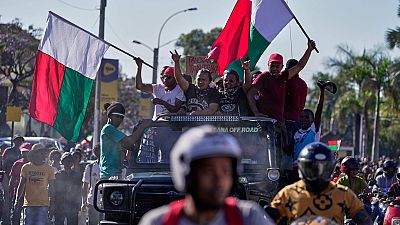

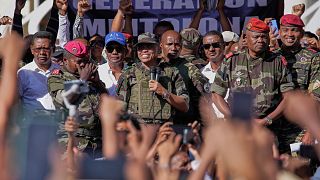
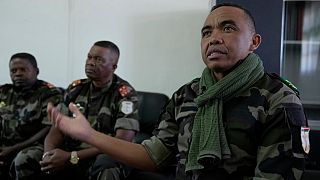
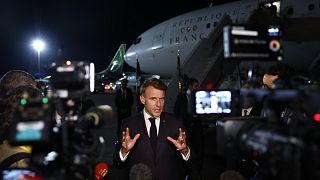

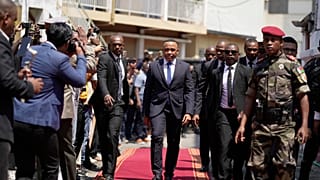
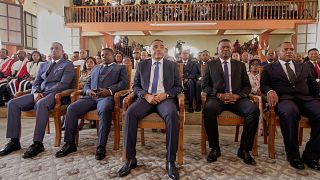
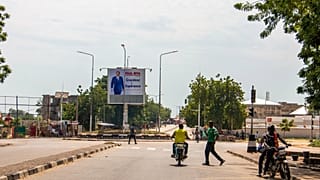

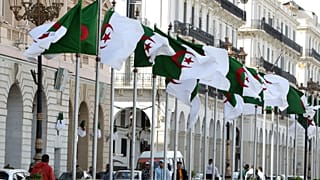
00:58
Normalcy slowly returns to Guinea-Bissau as restrictive measures ease
00:51
ECOWAS expels Guinea-Bissau after army general seizes power
02:03
Guinea-Bissau faces fresh uncertainty after disputed election and coup
01:11
General sworn in as interim leader of Guinea-Bissau after coup
01:17
Guinea-Bissau opposition accuses president of faking coup to retain power
00:44
Guinea-Bissau soldiers announce Gen. Horta N’Ta as junta leader